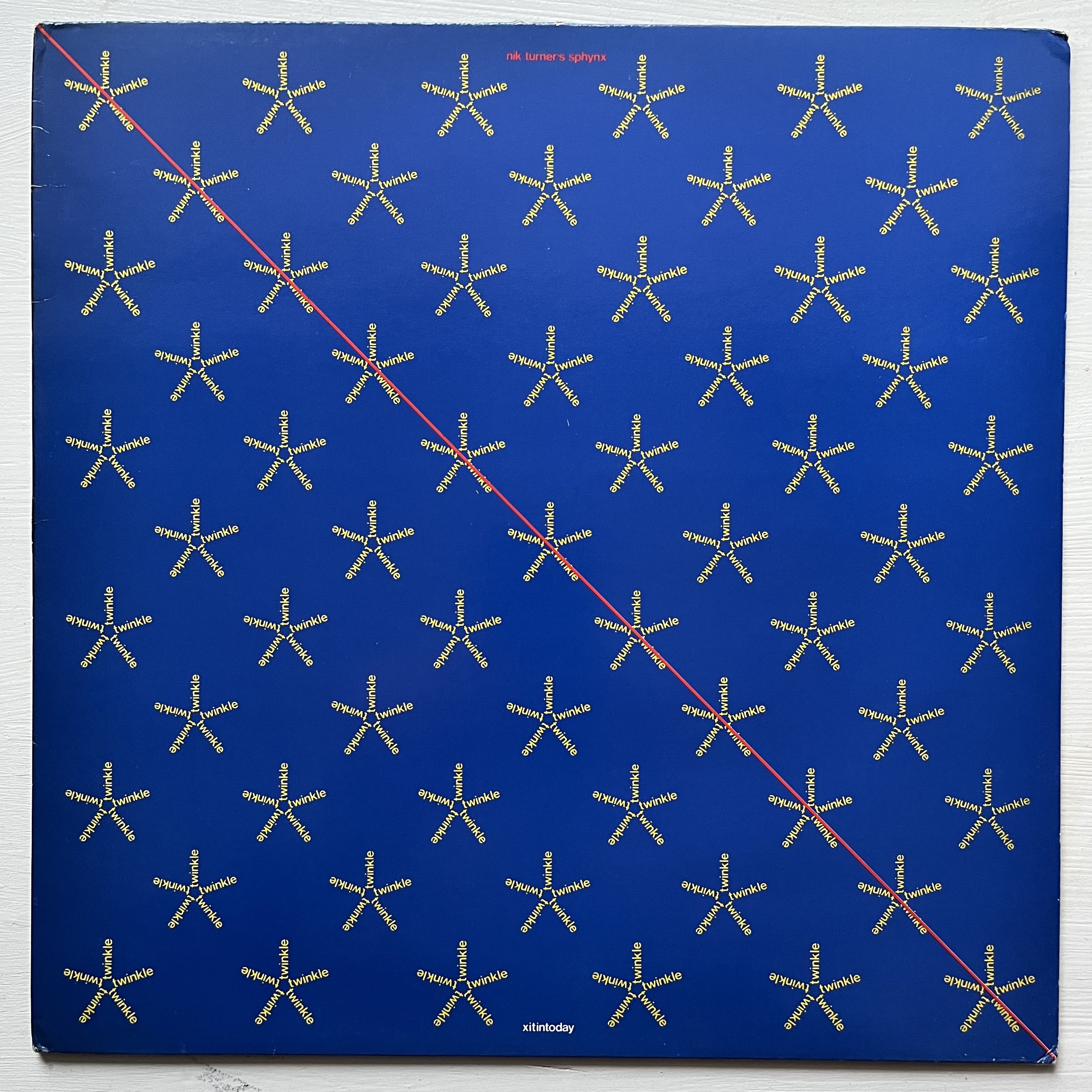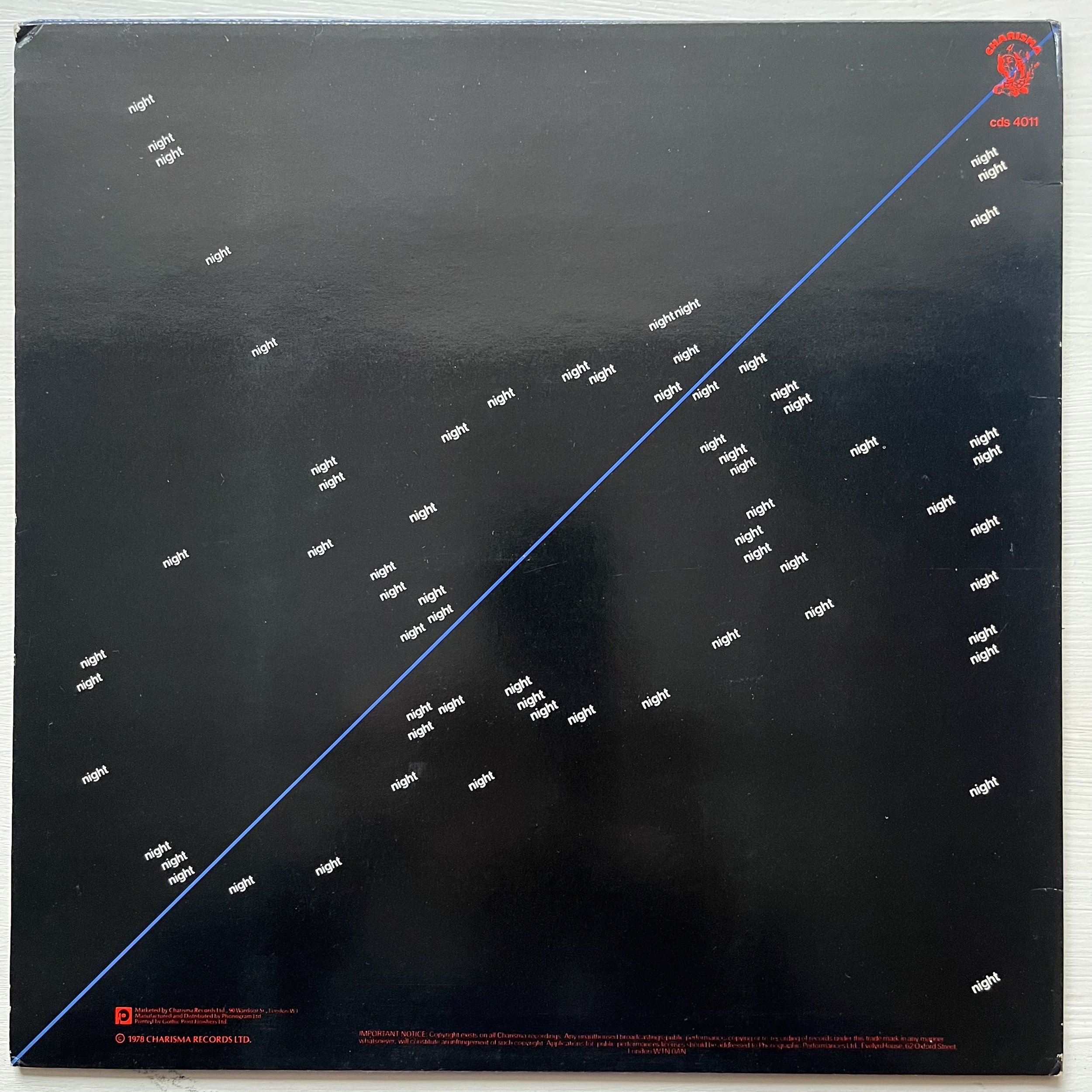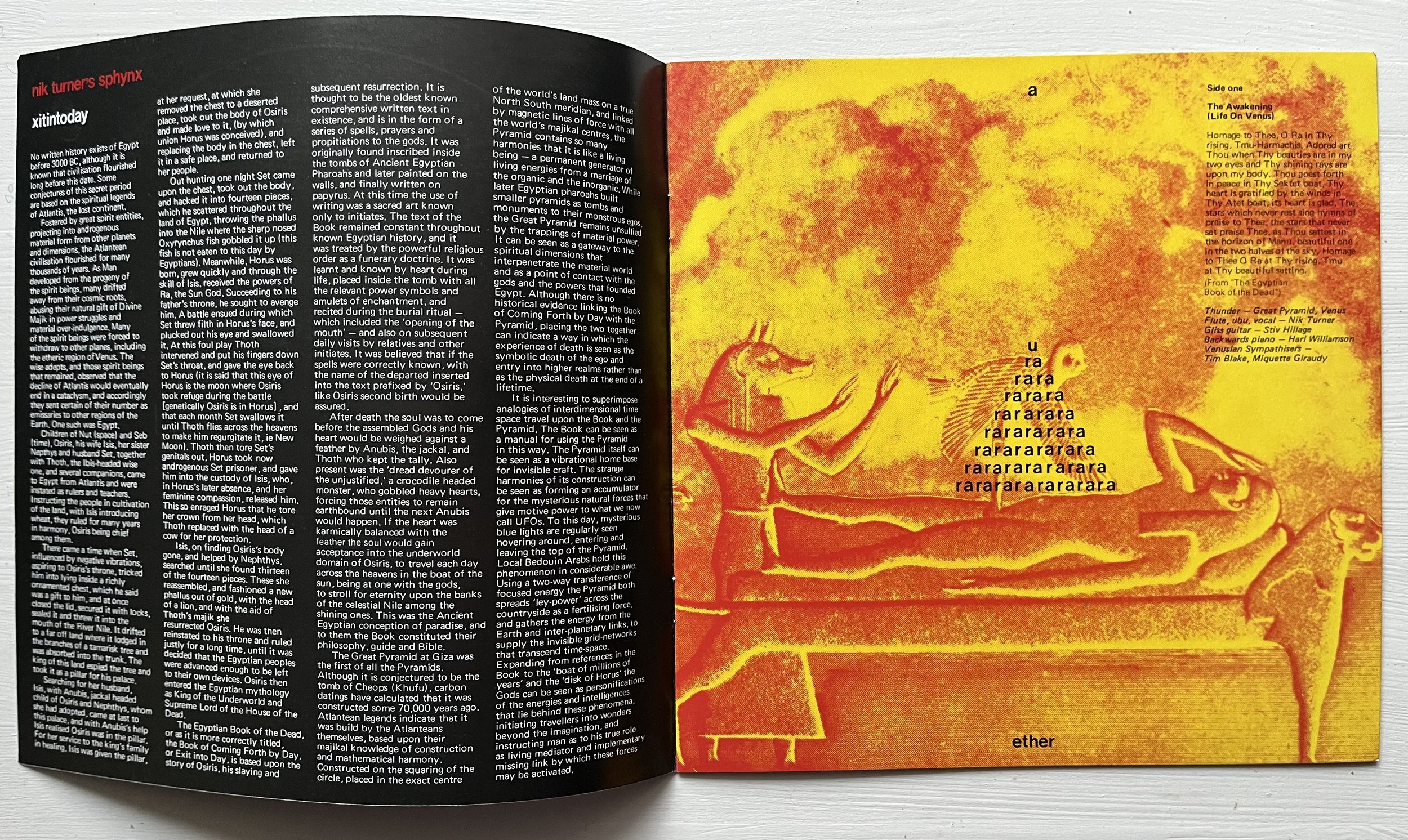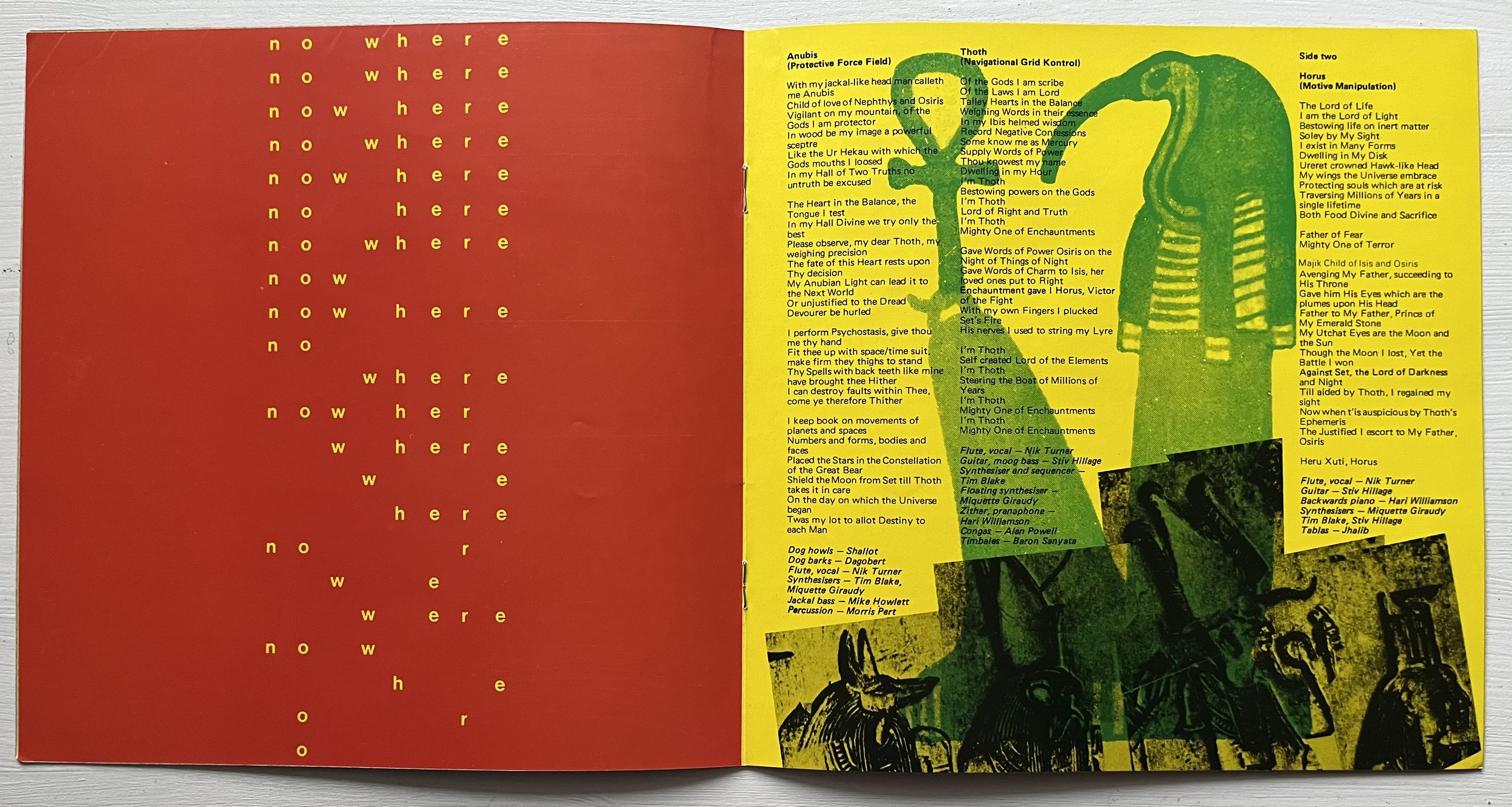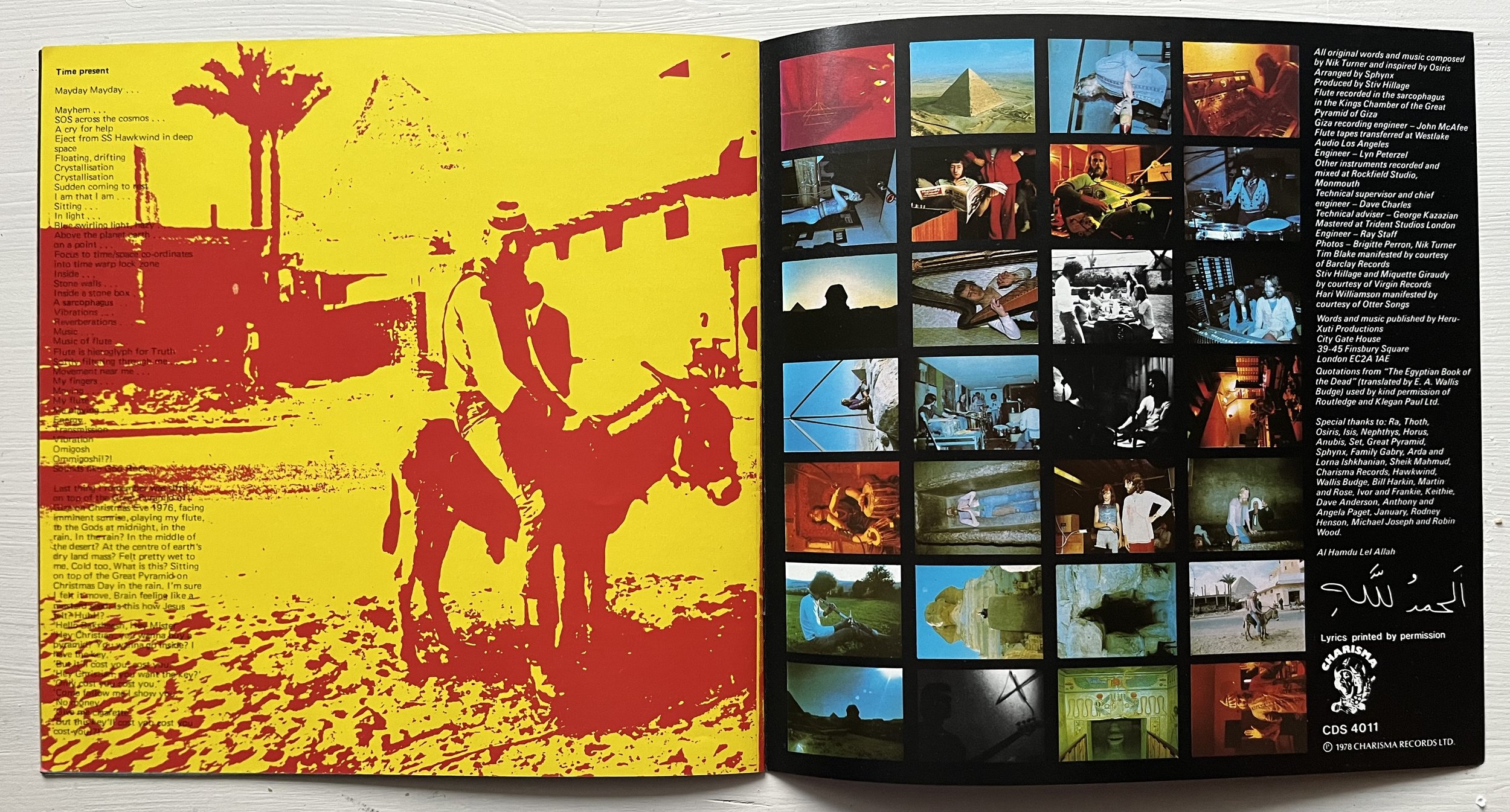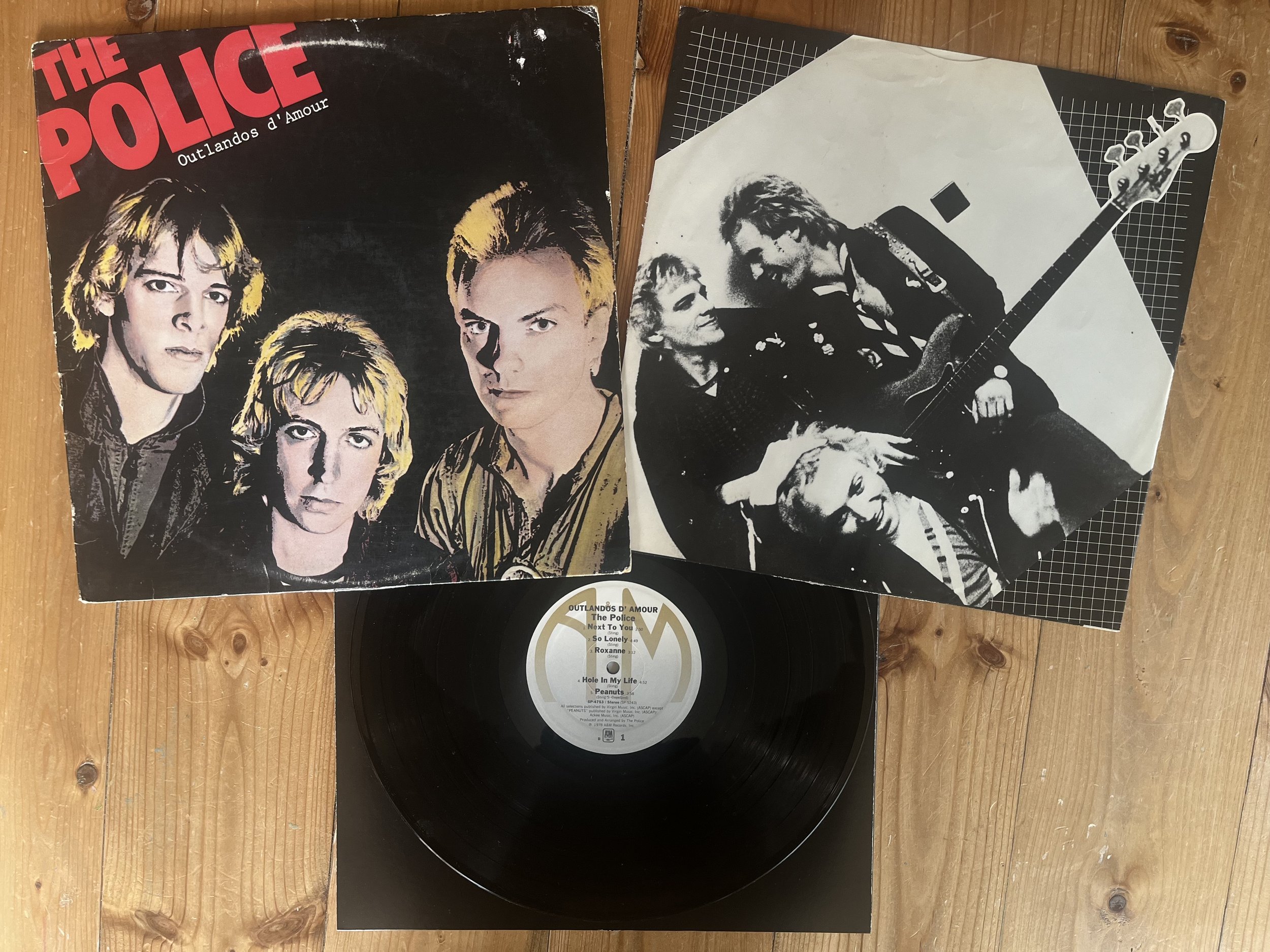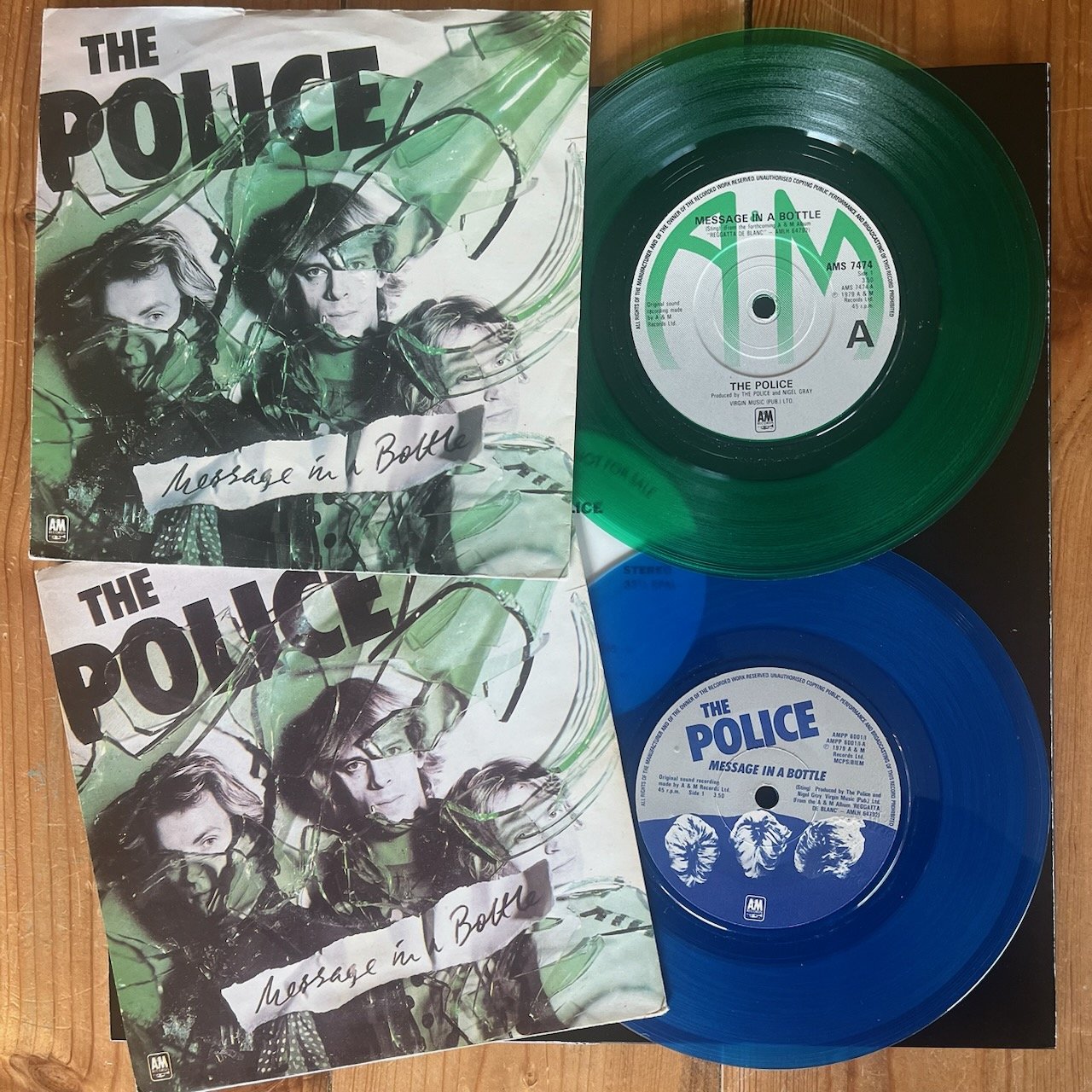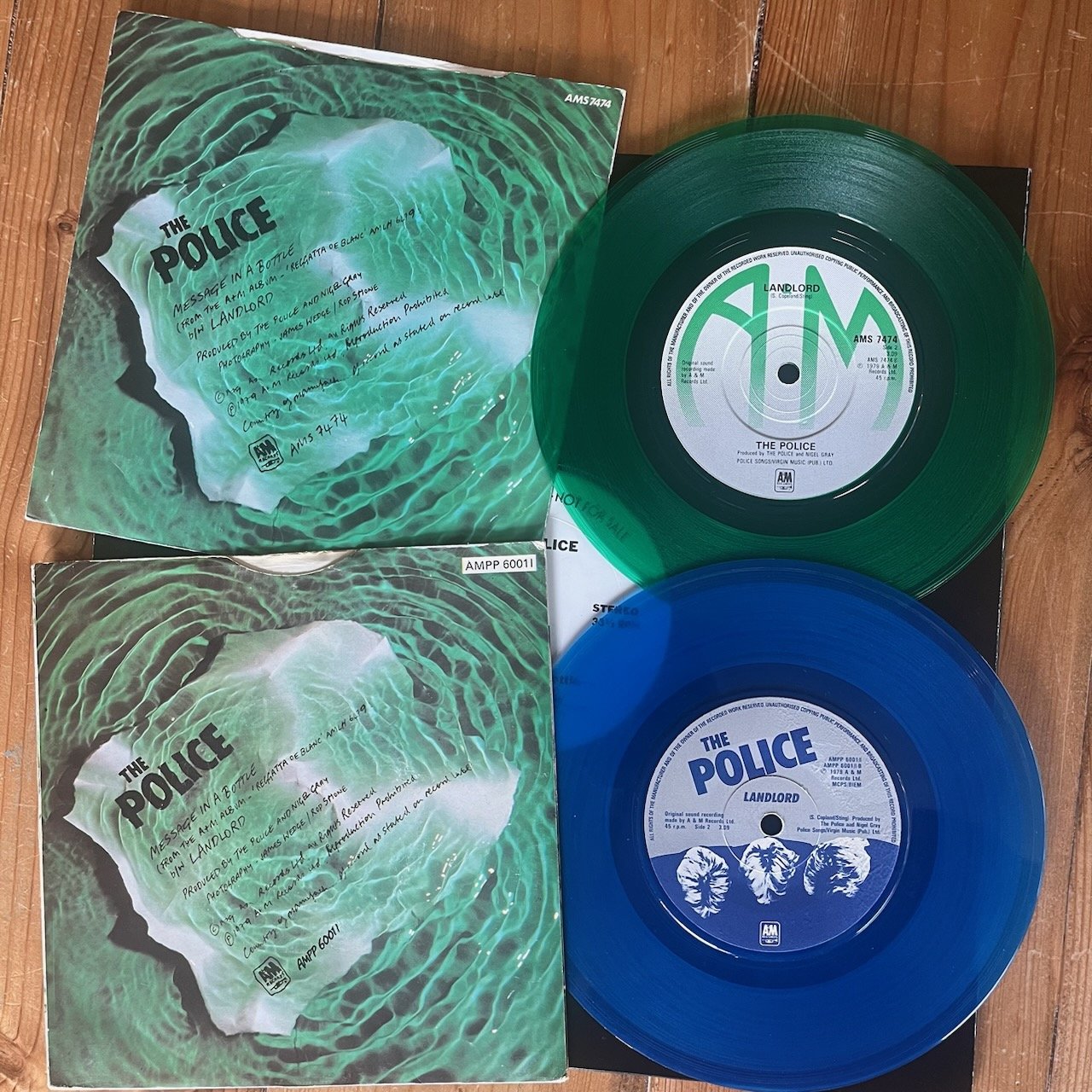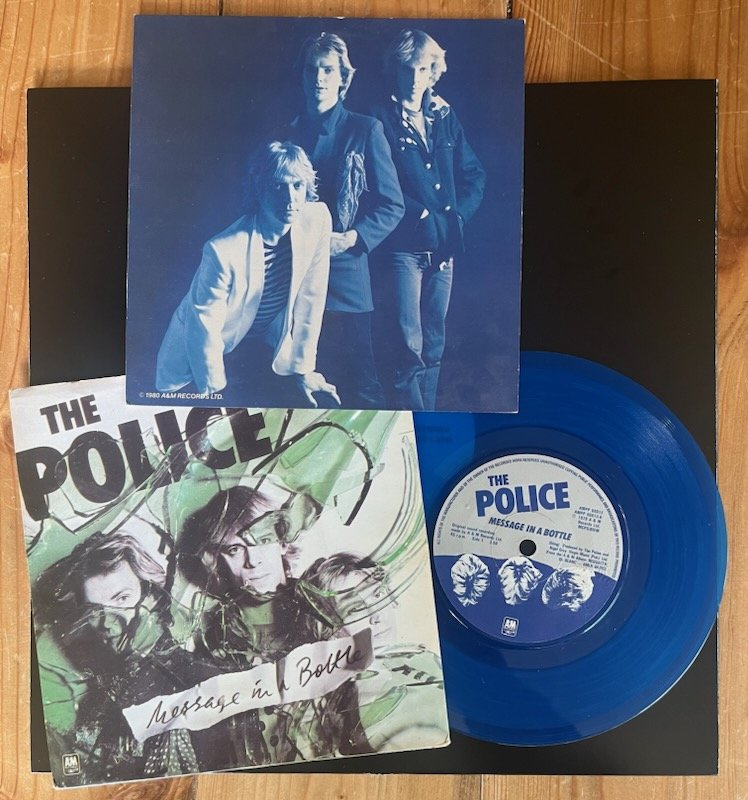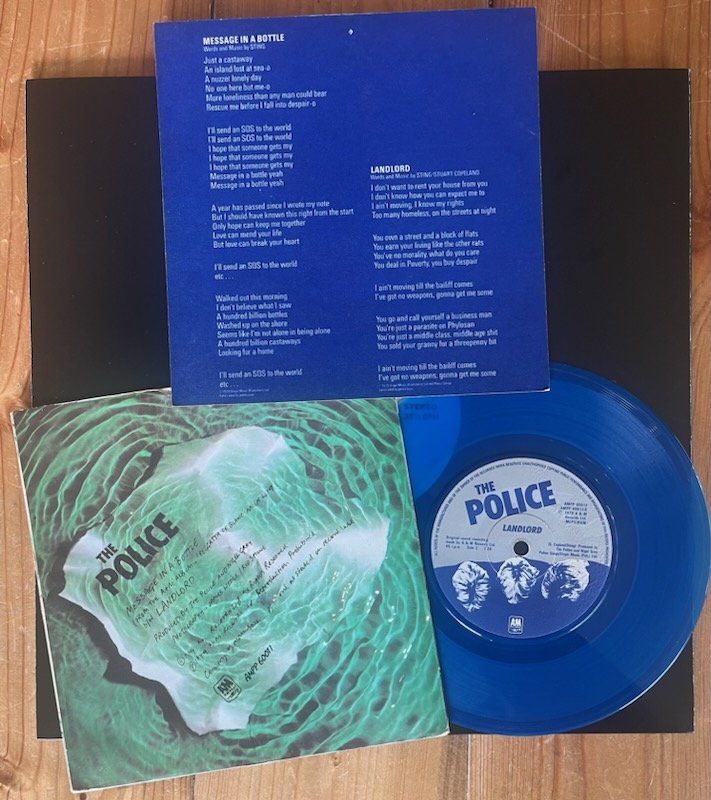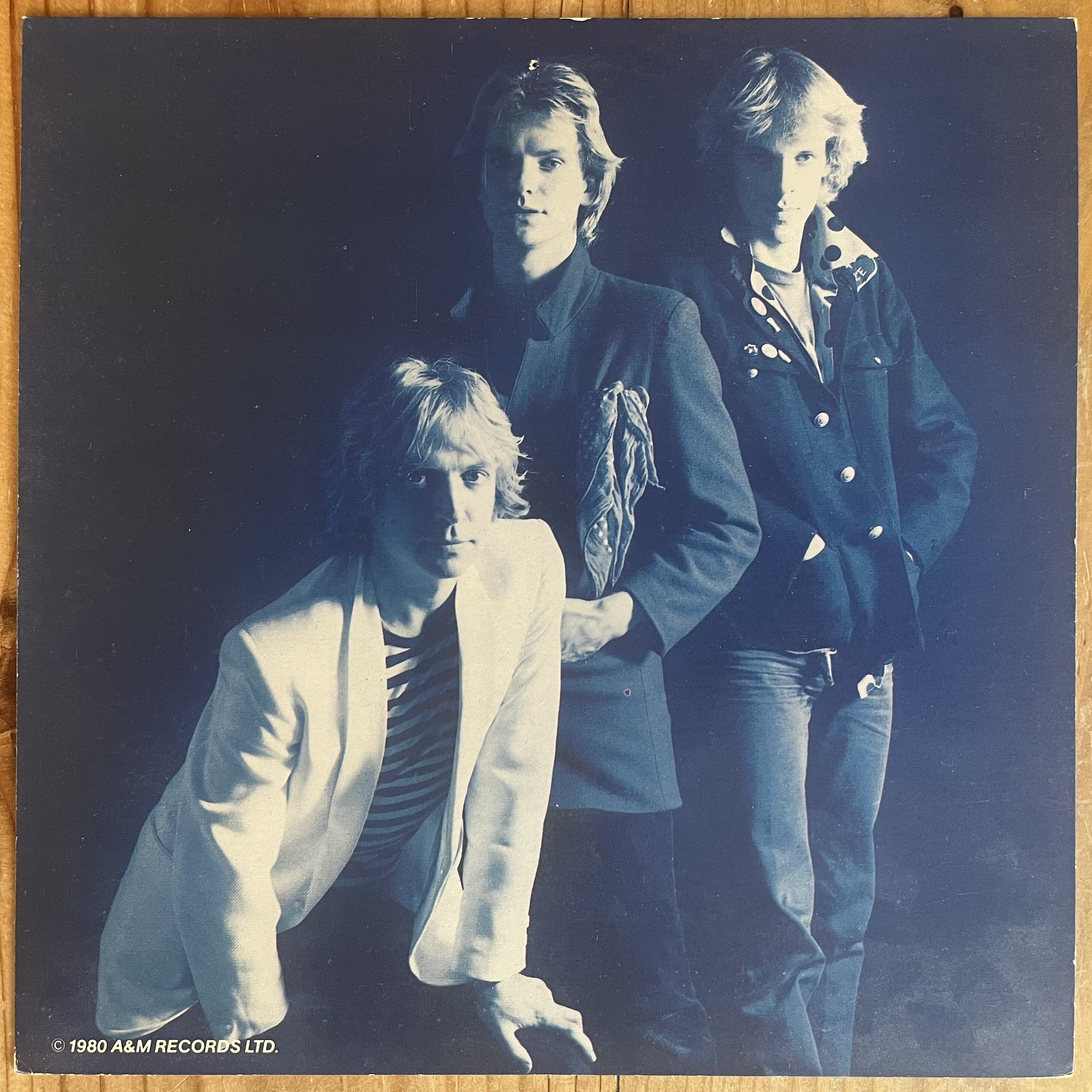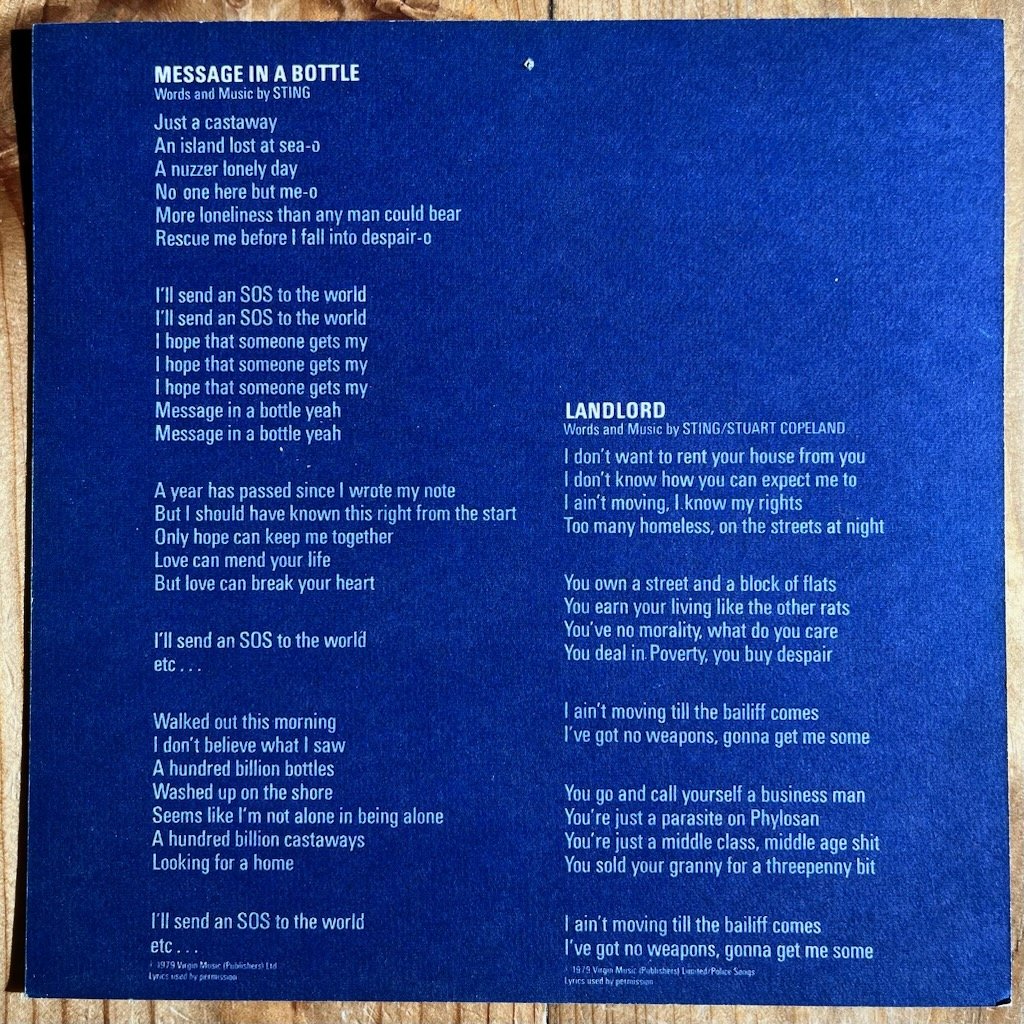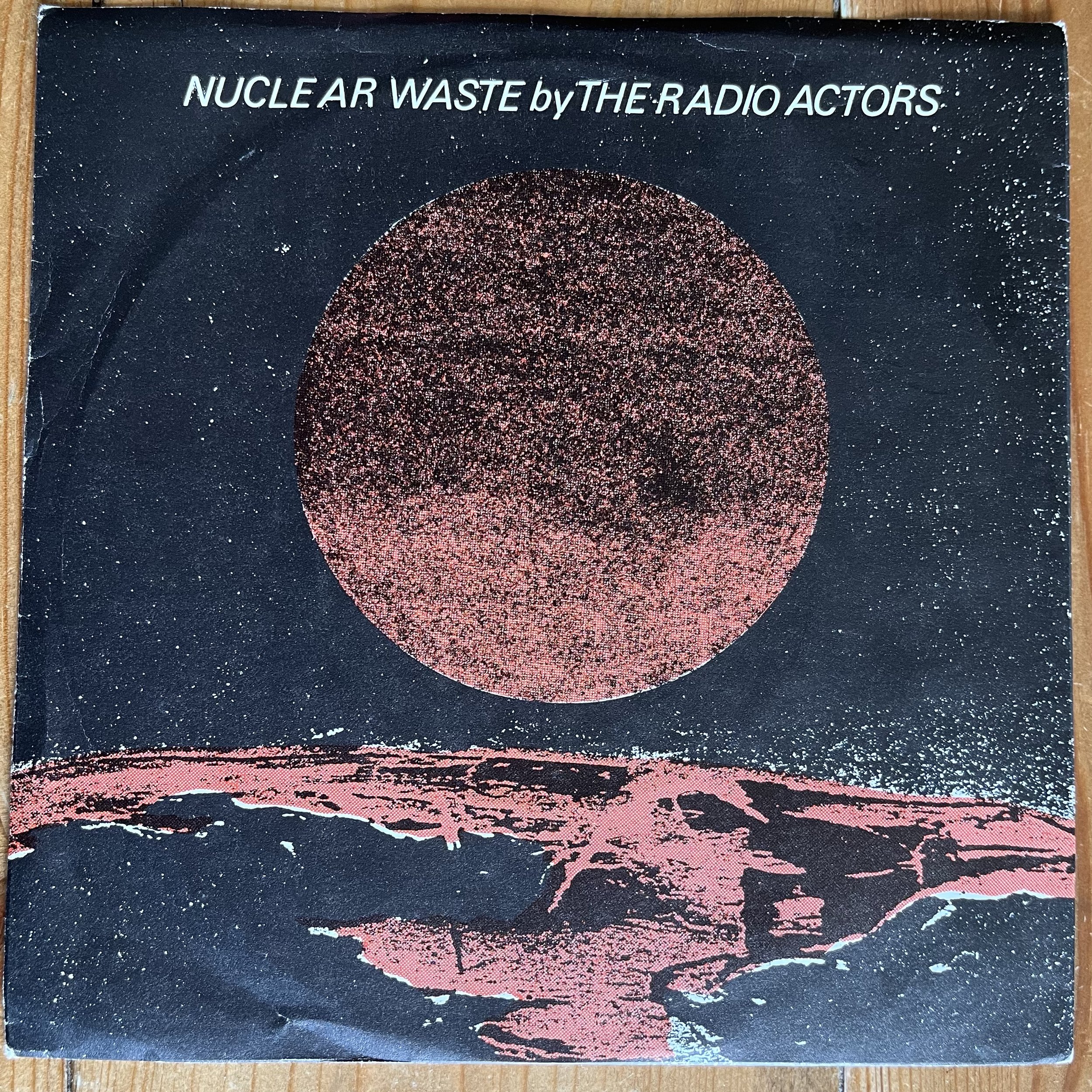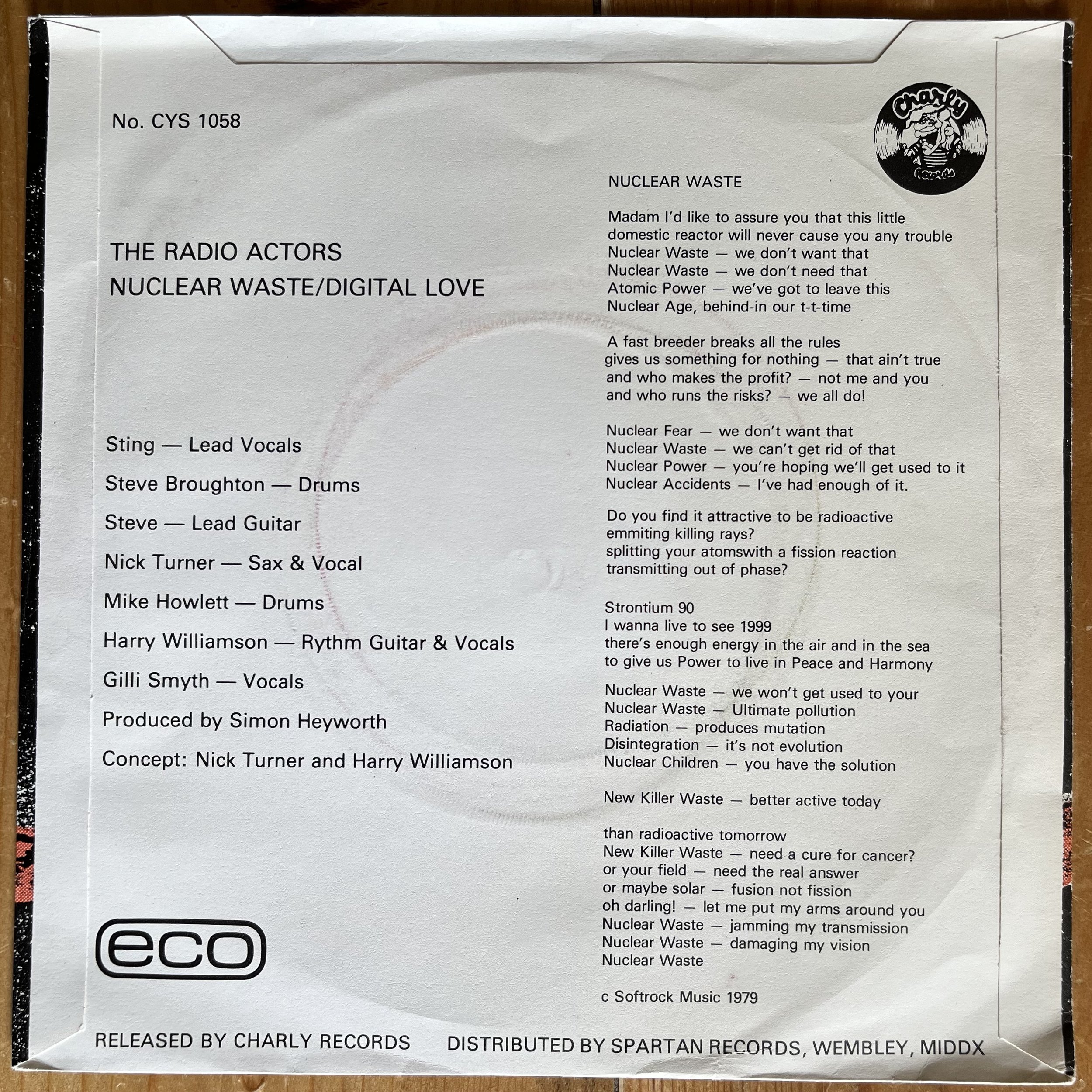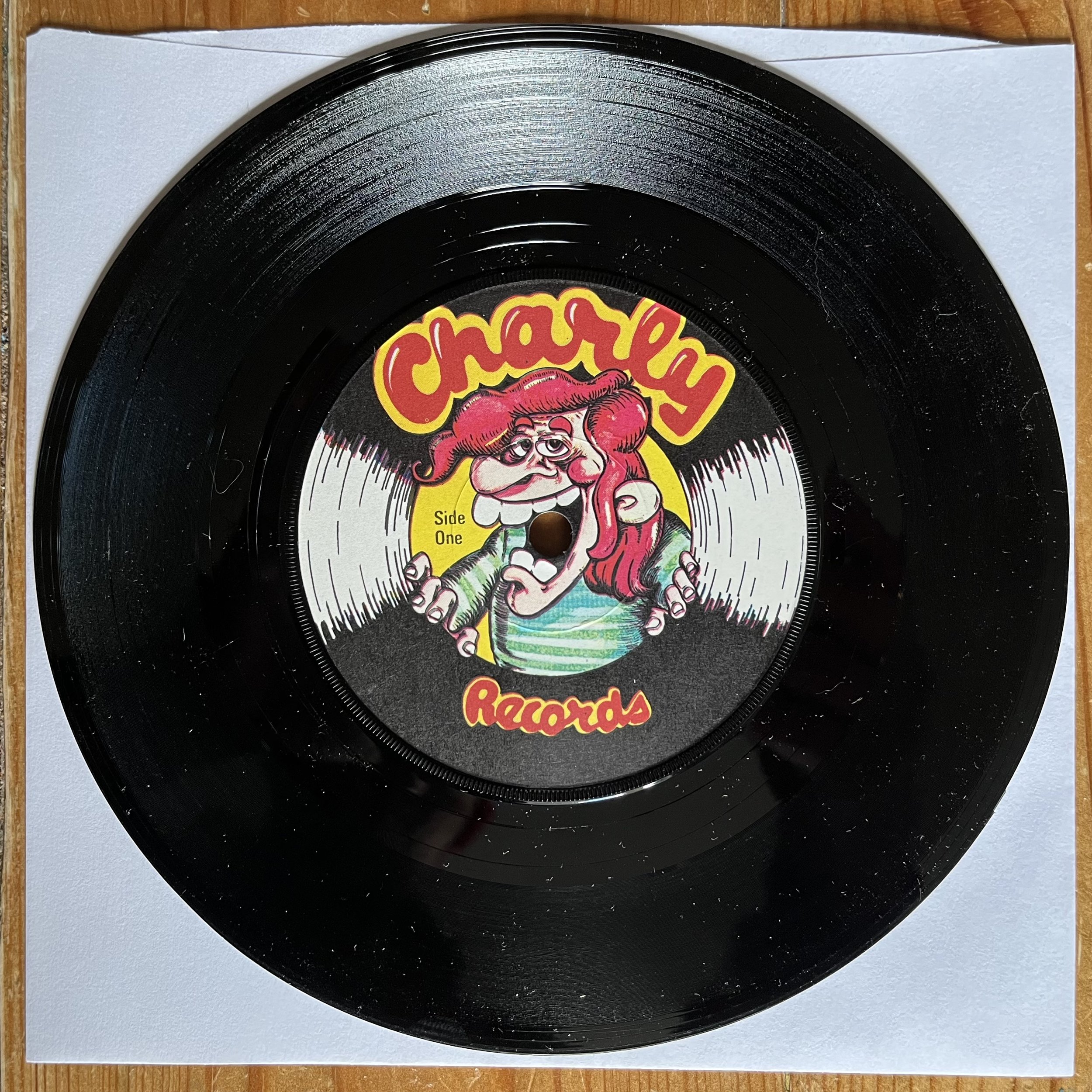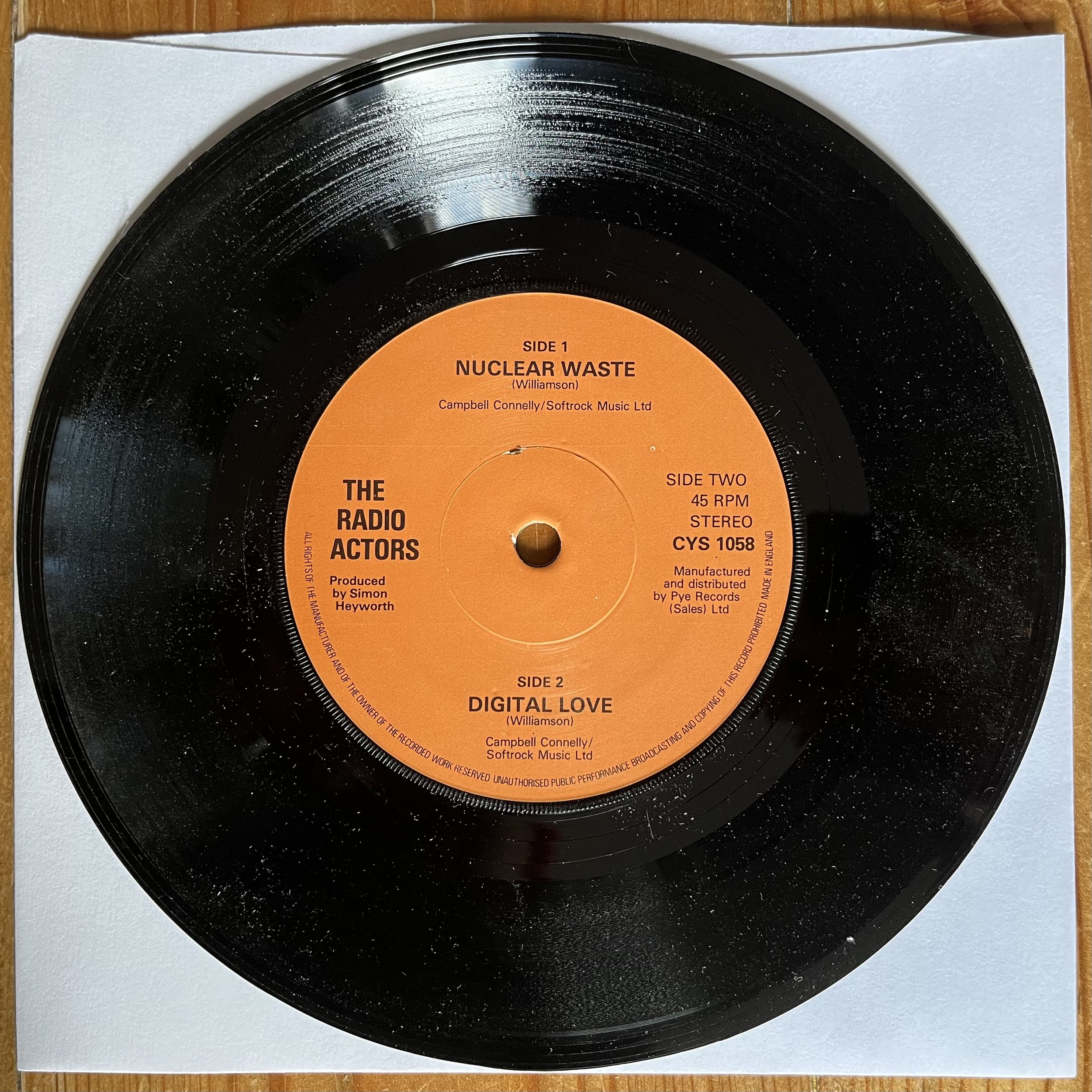Radio Actors: the Unheard Story of the Police, Hawkwind, and Gong Members Creating an Anti-Nuclear Anthem
Steffie Sharpstrings (Here & Now, Gong, etc.), Harry Williamson, and Nik Turner (Hawkwind) performing at the 7 7 77 festival at Butleigh on a brief break from scoring Tarka. (Photo by Jeza)
The 1970s was prolific for the amount of collaborations, curiosities, and one-off projects that came out during the decade. Bleeding into the 1980s, perhaps no band was known for offshoots and oddities more than England's psychedelic space rockers Hawkwind. These included Hawklords, Sonic Assassins, Lloyd Langton Group, Inner City Unit, Uncle Nik & The E.T's, and so many more that it is hard to keep track of it all. But it is a stand-alone single with a protest anthem A-side from the Radio Actors that piques our interest as one of the best and most overlooked of all the Hakwind family groups.
The Radio Actors (with a name that was a play on the word "radioactive") concept was developed by Harry Williamson, who had been a champion of the earliest iterations of the Green Party in England and wanted to release a single to support the anti-nuclear movement and Campaign for Nuclear Disarmament.
After demoing the track "Nuclear Waste" in 1977, Harry enlisted Nik Turner of Hawkwind who he knew from the free festival circuit for help with additional lyrics. At that time Harry was working on an orchestral project with producer Simon Heyworth who sought funds for a recording from Richard Branson (Virgin Records CEO and now world famous billionaire). Once this was in place Simon suggested bassist Mike Howlett and guitarist Steve Hillage who he knew would be sympathetic to the cause. Both musicians later played on Nik's "Sphynx" album which Steve also produced, and together had been in the prog band Gong for several years. Drum duties were handled by Steve Broughton, who Simon knew from engineering at Virgin's Manor studios.
A singer was needed, and Simon Heyworth suggested several. However, bassist Mike Howlett, who had by then left Gong, was playing in a band called Strontium 90 with a charismatic singer named Sting. Mike urged Harry to try the unproven singer. When it came time to record, Harry recalls:
Sting arrived, a bit late, but also in a great energetic mood. He was keen to get into the guts of the song, and eagerly perused the lyrics I had typed out while listening to the backing track. When it came to the chorus, he turned up his nose at our rather out of tune and rough sounding backing vocals.
"I could sing it all, if you like?" he volunteered.
I wasn't keen on the idea – "Surely you'd run out of breath?"
"No, it would be easy," he said.
Then I made a foolish mistake, launching into a great diatribe about how it was supposed to be a people's anthem, so we needed lots of voices on the chorus to make it real and so on.
Sting rolled his eyes.
"OK, we'll do it like that" he replied, with a hint of disappointment.
We set him up for the vocal, and he launched into the song with huge energy and great technique. Later he used a pin to prick his finger and write the occasional lyric change in blood on the page.
The song was perfect with Sting's vocals. Within a few months, Sting had formed a new band called The Police who were releasing songs like "So Lonely" and "Roxanne." While millions of albums have been sold by The Police since then, the Radio Actors single remains one of the great unheralded records of the free festival era.
Here Harry Williamson explains how the entire project came together.
Radio Actors "Nuclear Waste" 7" on Charly Records (catalog no. CYS 1058, 1979) (photo NI staff)
How did the idea for a project to do an anti-nuclear song come about? Was it for a specific benefit?
Originally I wanted it to benefit the Ecology Party, a new political party I was championing in the mid '70s. It gradually morphed into the Green Party, although there were a lot of points of difference. We had village meetings in the hall which overflowed, often with 600 or more really engaged participants. I've never seen anything like it since. We espoused and explained new technology like heat pumps, wind farms, solar panels etc. at a time well before these things were commonplace. We also debated the sharing economy, the meaning of common land in law and tradition. Country crafts, companion planting, the benefits of good insulation, car sharing, electric cars, etc. This was in the early 1970s.
We envisaged socially networked communications based on a reinterpretation of Plato's Atlantis, a fictional society with inspiring design principles. We had all sorts of backers, and as it turned out, enemies as well. My father had educated me in the values of honest agrarian values, underlining the importance of food supply and nutrition in maintaining a just and healthy society. I lived in a remote part of Devon, and we made our own power, grew our vegetables and contributed as much to our local community as we could on a daily basis.
"Nik Turner's Sphynx at DAWN at Deeply Vale, having waited six HOURS to play (it was like that)." (Photo by Craig Mitchell)
"Sphynx Camp site at Deeply Vale 1978, which has a typical refugee look." -Harry Williamson (Photo by Craig Mitchell)
How did the lineup come together? You collaborated with Steve Hillage (guitar, previously of Gong), Mike Howlett (bass, also of Gong), and Nik Turner for his Sphynx project on the "Xitintoday" album. Is this where you first met those guys, and was the Radio Actors lineup an extension of Nik Turner's Sphynx?
The Radio Actors name was my idea. Rather than a band I thought of it as a vehicle to communicate some important information about nuclear power and policy in a theatrical and versatile manner. Hence the word "Actors" which is conveniently also a play on "Radio-active."
I already knew Mike and Steve (see below). I wanted it to be funny and serious at the same time, and have the possibility of communicating something important without seeming too officious or formal so it could fly under the radar. I had been in touch with Steve since the day Daevid Allen left Gong in Witney and I coincidentally arrived at the Gong House with a tonne of Honey (really, on the same day) en-route to the whole-food community of North Devon. I was given the address by the Global Village Trucking Company. On the day I arrived in my mobile home/delivery truck Gong and GVTC were at a gig - minus Daevid. I was encouraged to wait and say hello by the band chef. I ended up staying three days and making good friends with Steve and Miquette [Giraudy, keyboardist in Gong]. Steve was influenced by my late father's classic novel Salar the Salmon which he quoted in "Fish Rising" so there is yet another connection.
Later I met Nik in London. He had returned from Egypt after his father had passed away. He related the story of staying in the Great Pyramid and recording flute to a ghostly throng. He wanted to make an album of the Egyptian Book of the Dead based on the flute recordings, which was unusual to say the least. Later in Devon, 13th August 1977, the night I heard my father had died, Nik rang and asked me to come to Rockfield and record "Xitindoday," the "Book of Coming Forth by Day" or reincarnation. The invited musicians included Mike Howlett, Steve Hillage, Miquette Giraudy, Tim Blake, Maurice Pert, Alan Powell and others. I brought my 'Pranaphone,' an instrument I had invented and built with 38 sympathetic strings and inbuilt speaker and amplifier, to the sessions.
Previously I suppose Nik knew of my involvement with Pyramids because I had been a close collaborator with Bill Harkin - designer of the Glastonbury Stage Pyramid in 1971, and I personally had researched Earth energies since 1966. The Radio Actors shared Myself, Mike Howlett and Nik Turner with Sphynx, although Mike only played live once with Sphynx, at the launch at the Roundhouse. After that Sphynx had several bassists while on tour in 1978. I don’t think its relevant to say the Radio Actors is "an extension of Sphynx" at all. Although there are some musicians in common, that is not unusual. Both names are ephemeral.
Nik Turner's Sphynx "Xitintoday" LP (photo from collection of NI staff)
What about Steve Broughton? How did he come into the fold?
Steve Broughton was suggested by Simon Heyworth who knew him from Tubular Bells and the Edgar Broughton Band. Simon was the producer of "Tarka" for Amy International with myself and Ant Phillips [original guitarist for Genesis with Phil Collins]. Steve also guested on "Tarka" playing percussion.
The Police "Outlandos D'Amour" debut LP (1978) front cover and A side on A&M Records
The Police "Outlandos D'Amour" debut LP (1978) back cover and B side on A&M Records
Two versions of The Police's "Message In A Bottle" 7" on A&M Records from 1979. The green vinyl version is catalog number AMS 7474, and the blue vinyl version is catalog no. AMPP6001I and comes with an insert that features a photo on one side and the lyrics on the other. This version seemingly doesn't appear on Discogs…
The definitive Police album collection (courtesy of Sara)
Mike Howlett plays bass and Sting sings on the release. Was this before The Police had started? Did Sting become involved in the Radio Actors project through Mike Howlett?
This was about the same time as the start of The Police. Mike had been in a band called Strontium 90 with Sting. Two bass players. Mike suggested Sting as a possible vocalist when I played him the demo in early 1977. Mike was doing a lot of production work for Virgin then.
While Sting does vocals on the 7", it was before he became the Sting as we all know today. He has a reputation for being difficult to work with at times. What do you recall about working with him?
Sting was very sure of his ideas, and as someone who is also equally sure of my creative ideas, I respected and understood his viewpoint. He quickly suggested he sing the whole song, chorus and response, in one go. I agreed — it was much smoother like that.
Nik and I had previously rehearsed the chorus idea, and recorded it prior to his arrival, so we had a little friction on that point. In the end I just let him go. I had not realised that Sting's unusual vocal ability would allow him to easily sing both parts (no space for a breath between lines), as I had not previously heard him sing. Sting was in an 'enhanced state' when he arrived and somehow cut his finger and then drew some cartoons on the lyric sheet in his blood which was intense! I still have that lyric sheet.
I must say he took the whole slightly surreal lyrical 'story' I had written on board without any complaints, even though he did ask for some explanation of the more unusual lines. He was really easy to work with. "Theres enough energy – in the air and in the sea, to give us power to live in peace and harmony." Who would have thought it?
When you said "I just let him go," do you mean you let Sting go ahead and do his thing as he wanted to?
Yes exactly. He had a ton of energy for the project and I didn't want to get bogged down into "You do this, we'll do that" (i.e. chorus and response).
Did you ever cross paths with Sting or Mike Howlett later on?
I crossed paths once with Sting at a festival and many times with Mike, the last being at the Gong Unconventional Gathering in Amsterdam 2006 which was the swan-song for the original Gong. Mike later visited Daevid Allen in Australia. We are still in touch from time to time.
The year 1978 and the anti-nuclear movement line up with the early punk scene (particularly with bands like Crass). Was there any interest from the early punk scene in the record, and did you have any interest in punk at that time?
Nik Turner guested on sax definitely had punkish leanings by that time. We all were appalled by the increasingly authoritarian and inept government of Callahan, and later Thatcher/Reagan who appeared to be leading us all straight to a dystopian future of nightmare. While I understood and sympathised with punk, and produced a few punkish singles, and maintained a rage against deception and injustice, I wasn't a punk myself. I loved some punk music though.
"Frame from the Robot Woman re-release (from Snapper UK, 2019) featuring a punkish character from Robot Woman Trilogy which I wrote with Gilli Smyth between 1978 and 1989. Look carefully at the next frame and you might see Nik and I at Stonehenge/CND 1977." -Harry Williamson
How was the Nuke label set up with Virgin for this release? Did you approach them about a one-off label?
Simon Heyworth had produced "Tubular Bells" [prog album by Mike Oldfield released in 1973] for Virgin from which royalties had provided funds to float the whole Virgin Empire. Richard Branson was happy in return to help Simon out with his pet project. There was an initial pressing on The Nuke label through Virgin that soon sold out. Simon and I then remixed it at Ridge Farm in a mobile and re-released it through Charly.
When I asked Charly about royalties for the Ecology Party, they asked me if I wanted to "keep my legs." Later Charly gave it to DB Records and I saw a further 10,000 copies boxed in their studio. Again questions about royalties were "unwelcome." It is unfortunate because the Ecology Party was in dire need of funds at this time in Thatcher's Britain. I sold an interest in 25% of the broadcast/publishing royalties to a small publishing company, hoping to get some onside help. They had relatives who worked as technicians at Sellafied aka Windscale and they arranged a film shoot for a clip, on the main reactor roof! I was horrified and really surprised by the idea. The rest of the band were not too keen either. I declined the kind offer.
Gilli Smyth, ex-Gong, my ex-partner, with whom I headlined Glastonbury twice, also had a family connection to Sellafield. Her sister Shirley worked near the plant and sadly contracted non-Hodgkin's Lymphoma, from which she died. I only met her once. We went for a long walk on Saunton Sands, where Shirly identified more than 50 types of wild flower in the dunes. It is interesting in the literature that even today the official line appears to be that ‘no-one knows if cancers like this, that actually kill people, are caused by radiation exposure. This stems in my opinion from a deliberate misinterpretation of the statistical nature of the research into the probable causes of the disease in question, and appears to be used very imprecisely in the public debate (about technologies and risk) to conveniently obscure what seems a clear connection between exposure to radiation and radiation caused sickness.
That's too bad on the royalties situation with Charly. The purpose of the release was for such a good and righteous cause, only to have it not work out as much as you'd have liked. I'm sure that was frustrating.
Yes. I don't want to sound too complaining. I was very disappointed in Charly to put it mildly. They were 'friends' of Daevid Allen and Gilli from the old days in France and I trusted them.
Where you said there were another 10,000 in boxes in a studio, does that mean there's still copies sitting in some warehouse somewhere you think? I'd be curious.
No, I'm sure they were for distribution and sale. DB Records was the label. Looking into the maze that is Discogs, I can't find that actual release there, but probably no surprise. There are LOTS of 'DB Records' variations.
Charly's method was to avoid paying royalties by releasing the records on different labels through different distributors. They did that for many of their artists. I'm sure they were not alone. Record pressing plants are a licence to print money and never release information about products or runs to anyone except the account holder. It was pure luck that I stumbled on a room full of 'my' product at a studio I had booked. The studio staff had no idea I was connected with the records they were storing in the large front room.
I had another such lucky moment visiting PRT records after "Tarka" had topped the new music charts in about 1989, and on a visit from Australia, I went to the warehouse (the address I had) and discovered a semi-trailer full of "Tarka" CDs en route to Italy! The driver kindly gave me a few copies of MY ALBUM. Quick calculation indicated at least 40,000 units on that truck. Never accounted for. That's the business. Artists are sometimes advised to retain the most ruthless lawyers they can afford. That's about the only legal recourse. Sunny Murray strapped TNT to his chest and sat sweating in the Charly Paris office until they paid him in full on the spot, but I was not mad enough for that. It's amazing how much cash some people hold on the premises.
Any other memories of the recording of the 7" or anything else to add?
Well...
When we arrived at the little studio in Swiss Cottage a Gas Board air compressor was running just outside the studio, and men were digging up the road. Since we could hear the engine running everywhere, I decided to record it anyway, slow it down and use it as a "found object click-track" for the B-side, "The Machine Song." This was inspired by the short story The Machine Stops by E.M. Forster. It's a classic sci-fi tale. I used the rhythm of the engine to mix with Steve's drums and Mike's bass to create a mechanistic collage. Coming to the instrumental, the groove changes before returning for a final verse and chorus outro.
I thought it was highly unlikely that we would stay in sync in the instrumental once the track was muted, and I didn't want to adversely affect the headphone mix with the generator later, so I got Simon to mute the click track until the end.
I was amazed to find that the "band" (Steve, Mike Howlett and I) had stayed perfectly in time with the click track without hearing it, for a further few minutes, and I was able to use the generator sound in sync until the end. This might not make sense unless you have actually used a click track yourself. The likelihood of maintaining sync after a minute or two of unsynchronised playing is remote to say the least. Staying absolutely in time without a reference is UNHEARD of. Then I found out that we were all good solid – rock solid – Taureans. You know the sort, reliable, good at repetition. Amazing. In 47 years of production I've never again witnessed that degree of time keeping precision.
Harry Williamson now runs Spring Studio in Melbourne, Australia. Thank you very much to Harry for all his work and cooperation on this feature!
More info on the Radio Actors by Harry Williamson can be found at Sting and the Radio Actors – Nuclear Waste.
For Hawkwind related info, check Hawkwind.com and the Hawkwind Files.
For info on Gong and related groups, check out the Planet Gong website.
For those interested in more info on the Free Festival scene of the 1960s through 1990, check out the UK Free Festival Archive.
Check out the Campaign for Nuclear Disarmament who are still doing great work.
All live and festival photos from the personal archives of Harry Williamson and used with permission. Photo credits: Jeza and Craig Mitchell.
Massive Hawkwind collection photo from Tom at General Speech.
Photos of The Police vinyl collage come from the collection of looooooong time friend of the mag Sara.
Radio Actors EP and collection of albums by Hawkwind, Inner City Unit, and the Sphynx album all featuring Nik Turner come from the collection of Negative Insight.
Be sure to read our prior feature on Hawkwind entitled Night of the Hawks: How an Underground Punk Label Catalyzed Lemmy's Reunion With Hawkwind.







